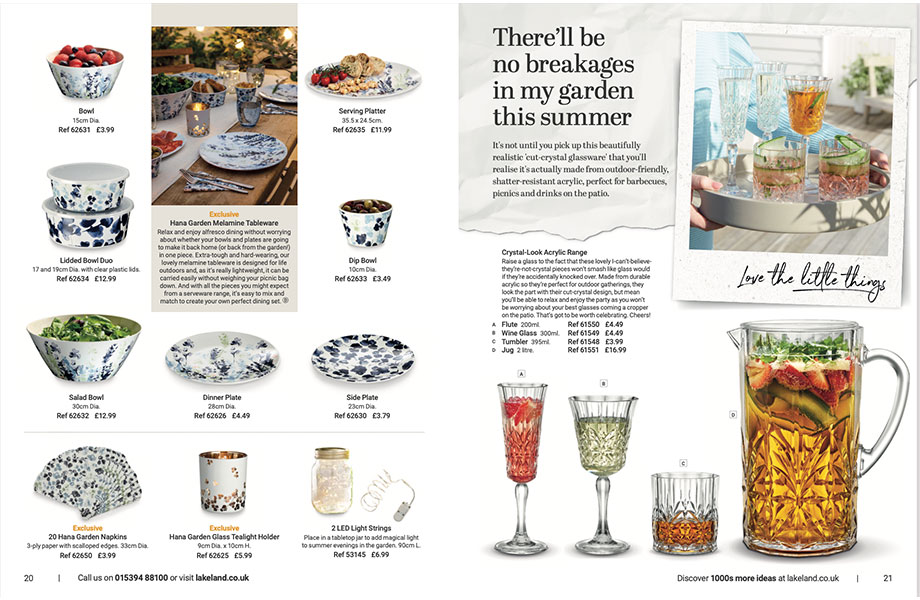Date Added: 12.07.2021
Mins Read: 2 mins
Author: Josh Seaward
Print Design: Using Density
Effectively for Product Marketing
Using high density in print design
So ‘page density’ in print design refers to a marketing spread mostly commonly found within a branded catalogue or brochure.
Many professionals consider all available space to be possible selling space. But there is an argument that too much promotional information can have the opposite effect on its readership.
And this is a view in the industry shared by our Lead Publications Designer here at CHS, James Harvey.
He and print design, similarly to salt and pepper or Eamon and Ruth, are made for one another.
James has been at CHS for over 15 years. In that time he’s produced print design for some of the nation’s biggest brands like Lakeland and B&Q.
James says page density is an important consideration to make because it sets the pace of the reader journey and maximises the exposure of core information. It influences everything from the ability to command the readers attention and engage audiences to the overall quality of the spread.


With a wealth of experience in the field, James has shared five tips to master the high density page.
1. Identify hero spaces
Start by identifying where the most valuable page spots are and ensure they are allocated only for your most profitable or popular products. Research into eye-tracking has revealed the top-right corner because this is where the reader’s eyes tend to go first.
This behaviour is important so bear this in mind over the planning stages.
2. Set a product hierarchy
A product hierarchy goes hand-in-hand with hero spaces so identify the most important ranges to showcase and reserve the hero spaces for them.
3. Strip it back
Be critical on what needs to be included in the spread. Removing unneeded copy, flashes, roundels or annotations can all help simplify a spread because simpler spreads are often favoured in the eyes of a reader.
4. Grids are your friends
Laying grids over the top of the spread will help you visually interpret available space more accurately. This should be done at the start of every catalogue job to ensure consistency across every page.
5. Create templates
Once you’ve identified a layout and a design that works your products and brand, use it as a cornerstone for all future printed material. Because not only will this help maintain brand consistency across multiple channels it will also save time further down the line for similar projects.
We’re very proud of the work we do so we’ve also included some of our latest Summer Lakeland spreads to showcase how we use page density for the benefit of our clients. Click here to see more of our print design work.
Our
Awards
Best Financial Services
Campaign Winner 2020

Best Financial Services
Campaign Winner 2020

Rated 9.2 out of 10
from our clients

Marks & Spencer Food Portraiture 2nd Place 2020

Direct Marketing
and Print Winner 2019

Creativity/Innovation
Winner 2018

